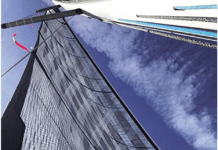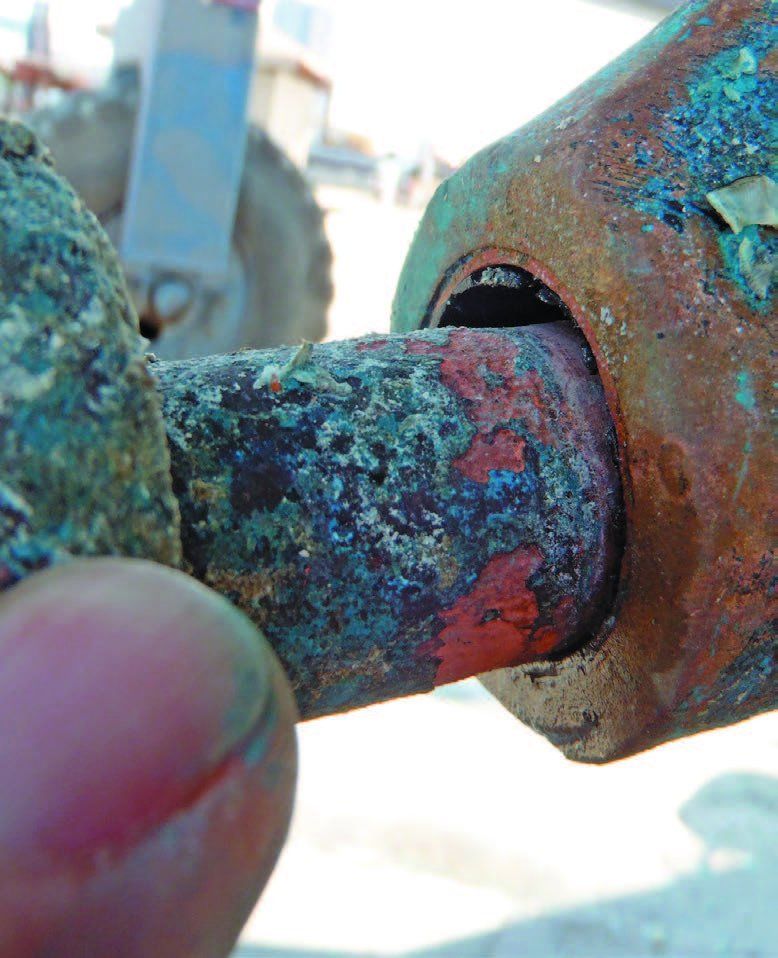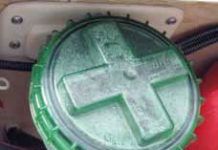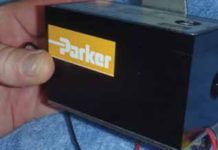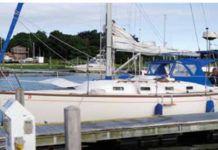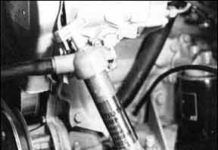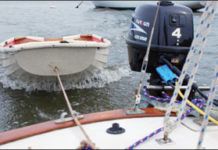EPA Mandate Sparks Fuel-vent Filter Test
Every day, as the temperature rises and falls, gases inside your fuel tank expand and contract. The emissions released during this diurnal breathing have raised concerns at the U.S. Environmental Protection Agency, and in July 2011, the agency mandated passive carbon canister filters on all installed gasoline-tank vent lines to collect fuel evaporation emissions. While older boats are not required to retrofit, we wondered how such a filter would affect fuel quality and engine performance-and whether carbon is the most effective filter media-so we launched tests using E10, gasoline, and diesel to find out.
Engine Maintenance: Keeping Your Fuel Clean
No good ever comes of fouled diesel fuel. One of the best ways to keep fuel free of contamination issues like condensation buildup—and the bacteria growth it promotes—is fuel polishing. Fuel polishing in its most basic form is the act of circulating the diesel in your tank through a filter. The Parker FPM-050 diesel fuel polisher is designed to be plumbed into the fuel supply line between the existing primary fuel filter and the engine. Testers plumbed the FPM-050 to recycle fuel into a container for several days. Testers looked at flow rates, contamination, sludge, ease of installation, and price.
Additives for ULSD Fuels
I just read an editorial in another magazine stating that next year, only low-sulfur diesel will be sold at fuel docks. They went on to say that you can kiss your old diesel goodbye and re-power. I really don’t want to do that. Our 27-year-old M-30 Universal is running just fine. It seems to me that an additive should take the place as a lube that sulfur did for the engine. What is your opinion?
Winterizing the Engine: Maintenance that Is Truly Preventive
Winterizing an inboard engine installation means a lot more than filling the cooling system with antifreeze and stuffing a rag in the exhaust outlet. It means taking care of the exhaust system, the fuel system, the engine controls, and other components of the drive train, such as the shaft and prop. If you want to do these things yourself — none of them is difficult, only time consuming — plan on a long day of work, or perhaps a leisurely weekend. It's work that will pay off, however, both in improved understanding of your boat's propulsion system, and in money saved. At $25 per hour, the simple projects described here will save you about $200. Few special tools are required, and the only skill necessary is a modicum of common sense.
Winterizing the Engine: Maintenance that Is Truly Preventive
Winterizing an inboard engine installation means a lot more than filling the cooling system with antifreeze and stuffing a rag in the exhaust outlet. It means taking care of the exhaust system, the fuel system, the engine controls, and other components of the drive train, such as the shaft and prop. If you want to do these things yourself none of them is difficult, only time consuming plan on a long day of work, or perhaps a leisurely weekend.
Upgrading the C&C 33 Part I
In July 1990 we bought a 1975 C & C 33 to function as a test platform for Practical Sailor. We chose it above others for several reasons: The design seemed typical of many modern sailboats, with a fin keel and spade rudder and moderate displacement; C & C had a good reputation; and the price was right.
Hard-to-Find Mercedes Parts – Knotmeter Fouling
Given the number of Mercedes diesels you see on the highway, its amazingly difficult to find parts for the marinized versions of these engines. Part of the difficulty is the origin of the marine versions of the various Mercedes engines. Mercedes, like several other engine manufacturers, doesn't make marine diesels. They do, however, license other companies to do marine conversions using their engine blocks.
Practical Sailor Compares 3 Electric Outboards
When it comes to the development of electric drive systems large and small, there’s a double-headed challenge. The first is the propulsion system itself, a combination of electric motor and drive train that efficiently turns watts into speed through the water. The second part is the acquisition of power to run the motor. Electric propulsion, in our opinion, is a good fit for daysailors and marina-to-marina cruisers, so we tested a few options available to recreational boaters looking for an electric outboard: the Torqeedo T-801, which we previously reviewed; the new Torqeedo T-1003, a beefier iteration of the T-801; and the Electric Paddle, a less-expensive option.
Yamaha Updates F-series Outboards with New F4 and F6
Yamaha recently updated two of its portable outboard engines, the F-series four-horsepower outboard and 6-horsepower engine. We reviewed the original F4 and F6 in 2003. Both updated designs use an 8.5-cubic-inch engine block and both weigh 60 pounds, which marks a weight loss for the F6 but an increase for the F4. Both also have improved stowage capacity and demonstrated solid performance. The report compares the new outboards to the 55-pound Suzuki DF4, the top contender in Practical Sailors 2003 Outboard Engine test.
Practical Sailor Tests 4-horsepower Electric Outboard
As we did with the Torqeedo electric outboard and Minn Kota trolling motor in past tests, Practical Sailor put the Solid Nav Traveler to work in sea trials on a Cape Dory Typhoon to determine whether it was a viable replacement for a small boats gas-powered outboard. The four-horsepower Traveler electric motor is marketed by Solid Nav and manufactured by Suzhou Parsun Power Machine Co., Chinas largest outboard exporter. Using a brushless 48-volt DC motor made by Mars Electrical Co. of Milwaukee, Wis., the Traveler combines a familiar drive train and an innovative solid magnet electric motor. At first glance, it looks like a small conventional outboard. Available in both long-shaft (20 inches) and short-shaft (15 inches) models, the Traveler is a gasoline outboard alternative best suited for a pocket cruiser (like a Cal 25) or similarly sized weekend cruiser where electric propulsion is desired. However, its required battery entourage limits its portability and affordability, and charging needs limit its practical use on smaller boats.













